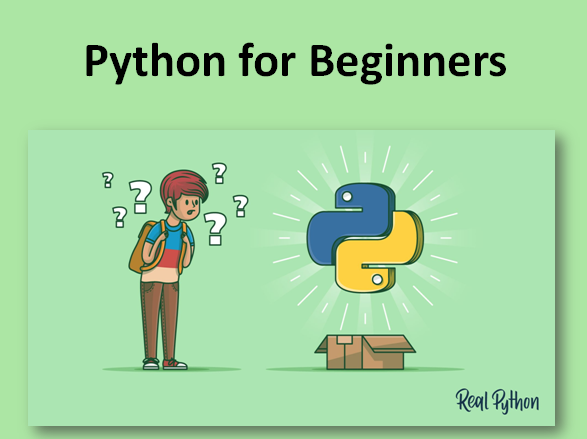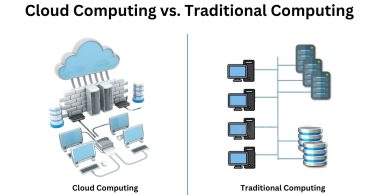Python, often celebrated as one of the most approachable programming languages, has firmly established itself in the realms of technology, data science, and web development.
For individuals stepping into the empire of programming for the first time, delving into Python promises a gratifying and enjoyable initiation. In this article, we will guide you through the foundational aspects of Python and elucidate why it stands out as an excellent starting point for beginners.
Why Python?
- Readability and Simplicity: Python’s syntax is meticulously crafted for clarity and readability, resembling plain English. This inherent simplicity reduces the complexity of program maintenance and development, making it an ideal language for beginners.
- Versatility: Python’s versatility spans across Various fields, such as, data science, artificial intelligence, automation and web development, cover a wide range of domains. Acquiring proficiency in Python opens the door to a numerous of chances and applications.
- Vast Community and Resources: Python boasts a vibrant and expansive community. This means that a wealth of resources, forums, and tutorials are readily available to support you on your learning journey. The Python community is renowned for its welcoming and supportive atmosphere, particularly for beginners.
Embarking on the Python Journey.
- Creating Your Environment: The initial step involves installing Python on your computer. Visit the official Python website, download the latest version, and opt for a code editor such as Visual Studio Code or PyCharm for writing and executing your Python code.
- Your First Python Program: Begin with a straightforward “Hello, World!” program. Open your chosen code editor, input print(“Hello, World!”), and run the script. Congratulations, you’ve successfully composed your inaugural Python program!
Python Basics
- Variables and Data Types: Grasp the fundamentals of storing and manipulating data using variables.
Python provide accommodations a diverse array of data types, including integers, , Booleans floats and strings. - Control Flow: Comprehend how to manage conditional statements (if, el If, else) and loops (for, while) to control the flow of your program
- Data Structures: Familiarize yourself with the inherent data structures in Python, like tuples, lists and dictionaries. Playing a crucial role, these structures contribute significantly to the efficient organization and manipulation of data.
- Functions: Cultivate the skill of crafting reusable code by creating functions. Learn about parameters, return values, and the significance of modular code.
- File Handling: Grasp the essentials of read the data and writing the data to and from files. Proficiency in file handling is crucial for managing external data and storing information.
- Error Handling: Acquaint yourself with common errors and learn how to handle exceptions gracefully. This skill is imperative for constructing robust and resilient code.
Conclusion
Python is not just a language that facilitates quick comprehension of programming concepts for beginners; it also serves as a robust tool for seasoned developers. As you commence your Python adventure, keep in mind that perseverance and rehearsal are needed. Embrace the obstacles, commemorate the successes, and savor the process of transforming into a skilled Python programmer.
Python For Beginners Outline
1: Introduction to Python
1.1 Why Choose Python?
- An exploration of Python’s widespread popularity and versatile applications across various industries.
1.2 Setting Up Your Development Environment
- Step-by-step guidance on installing Python and selecting a suitable code editor, such as VSCode or PyCharm.
1.3 Your Maiden Python Program
- Crafting a straightforward “Hello, World!” learn the fundamentals of the Python programming language and syntax.
2: Variables and DataTypes
2.1 Variables and Naming Best Practices
- Delving into the process of declaring variables with an emphasis on choosing meaningful and descriptive names.
2.2 Numeric Data Types
- A comprehensive exploration of integers and floats, including fundamental arithmetic operations.
2.3 Manipulating Strings
- Understanding the creation and manipulation of strings, with a focus on string concatenation techniques.
Module 3: Basic Operations and Expressions
3.1 Arithmetic Operations Unveiled
- In-depth coverage of basic arithmetic. Operations include multiplication, division, addition, and subtraction.. Also, a discussion on integer division and modulus.
3.2 Comparison and Logical Operators
- Exploring the comparison of values and the effective utilization of logical operators such as and, or, and not.
Module 4: Control Flow
4.1 Conditional Statements (if, elif, else)
- Mastering the art of making decisions within your code through detailed analysis of conditional statements.
4.2 Loops (for, while)
- An exploration of loop structures, both for and while, providing a foundation for repetitive actions in your code.
Module 5: Data Structures
5.1 Lists Demystified
- Comprehensive coverage on creating, modifying, and accessing elements within lists.
5.2 Dive into Dictionaries
- Understanding the concept of key-value pairs and effectively accessing and modifying dictionary elements.
Module 6: Functions
6.1 Defining Functions with Precision
- An in-depth guide on creating functions, incorporating parameters, and understanding the significance of return values.
6.2 Exploring Built-in Functions
- A comprehensive exploration of common Python functions like len() and range(), providing a solid understanding of their usage.
Module 7: File Handling
7.1 Mastering Reading and Writing to Files
- A thorough guide on opening, reading, and writing to text files, including the use of context managers with the ‘with’ statement.
Module 8: Error Handling
8.1 Decoding Errors
- An insightful exploration into the common types of errors, coupled with effective strategies for reading error messages.
8.2 Exceptional Handling with try-except Blocks
- A practical guide to handling exceptions using try-except blocks, ensuring robust and resilient code.
Module 9: Introduction to Modules
9.1 Harnessing the Power of Modules
- A detailed guide on importing both built-in and custom modules, unlocking the potential of modular and reusable code.
Module 10: Culmination with a Small Project
10.1 Synthesis of Concepts in a Small Project
- Integrating all the concepts learned throughout the modules to solve a simple problem or create a basic program, reinforcing newfound skills.



